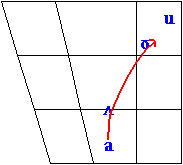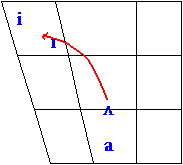

One of the distinctive traits of Canadian English is the different pronunciation of the diphthongs [aj] and [aw] in some environments.
[aj] and [aw] usually begin with the tongue body in a very low position (and usually central, though this varies for some dialects) -- the position we use the vowel symbol [a] for. The tongue body then moves upward and forward for [aj] or upward and backward for [aw].
Most Canadian English speakers use another version of these diphthongs in some words. Instead of the tongue starting in a low and central position, it starts mid and central, in the position we use the symbol [ʌ] for. The tongue body then moves upward and either forward or backward, just as it does for the regular [aj] and [aw].
normal [aw] |
raised [ʌw] |
 |
 |
normal [aj] |
raised [ʌj] |
 |
 |
Here are examples of words with and without Canadian raising:
| loud | [lawd] | lout | [lʌwt] | |
| house (verb) | [hawz] | house (noun) | [hʌws] | |
| gouge | [ɡawdʒ] | couch | [kʌwtʃ] | |
| eyes | [ajz] | ice | [ʌjs] | |
| tribe | [tɹajb] | tripe | [tɹʌjp] | |
| live | [lajv] | life | [lʌjf] | |
| ride | [ɹajd] | write | [ɹʌjt] |
Which word uses which version of the diphthong isn't a random choice. You can notice in the list above that all the consonants that follow [ʌj] and [ʌw] are voiceless, while all of the consonants that follow regular [aj] and [aw] are voiced. The "raised" variants [ʌj] and [ʌw] will be used whenever the following consonant is voiceless; otherwise regular [aj] and [aw] will be used (including the case when there is no following consonant, as in cow [kaw] and my [maj]).
You can hear sound files of words with Canadian Raising on Taylor Roberts' web page.